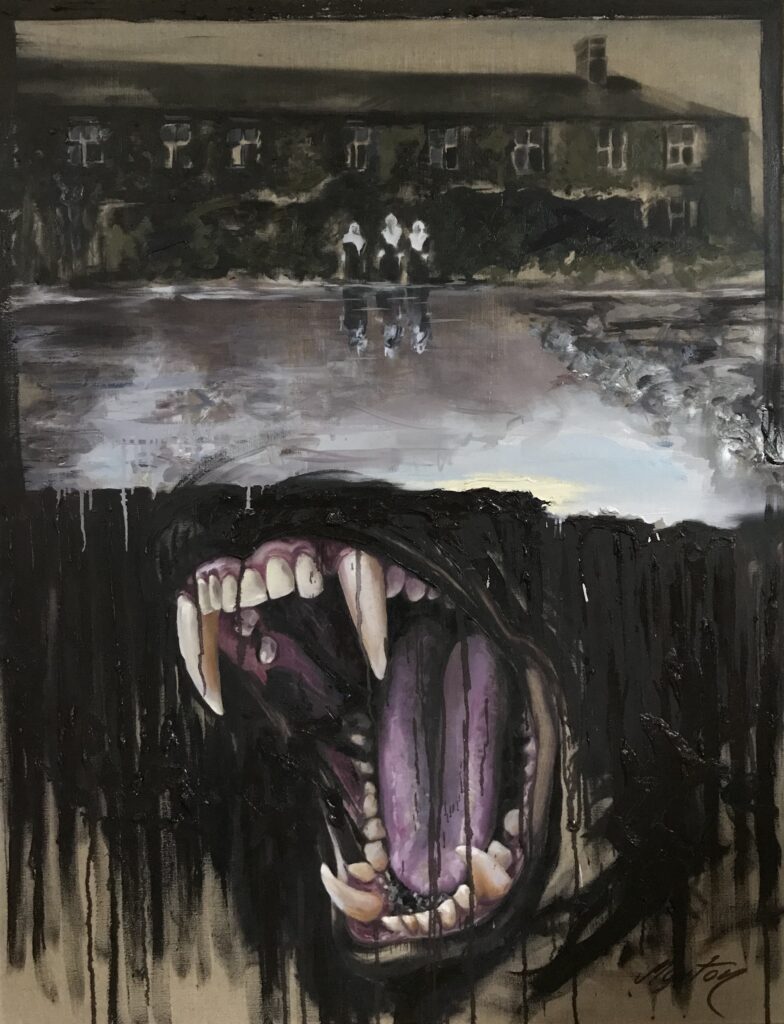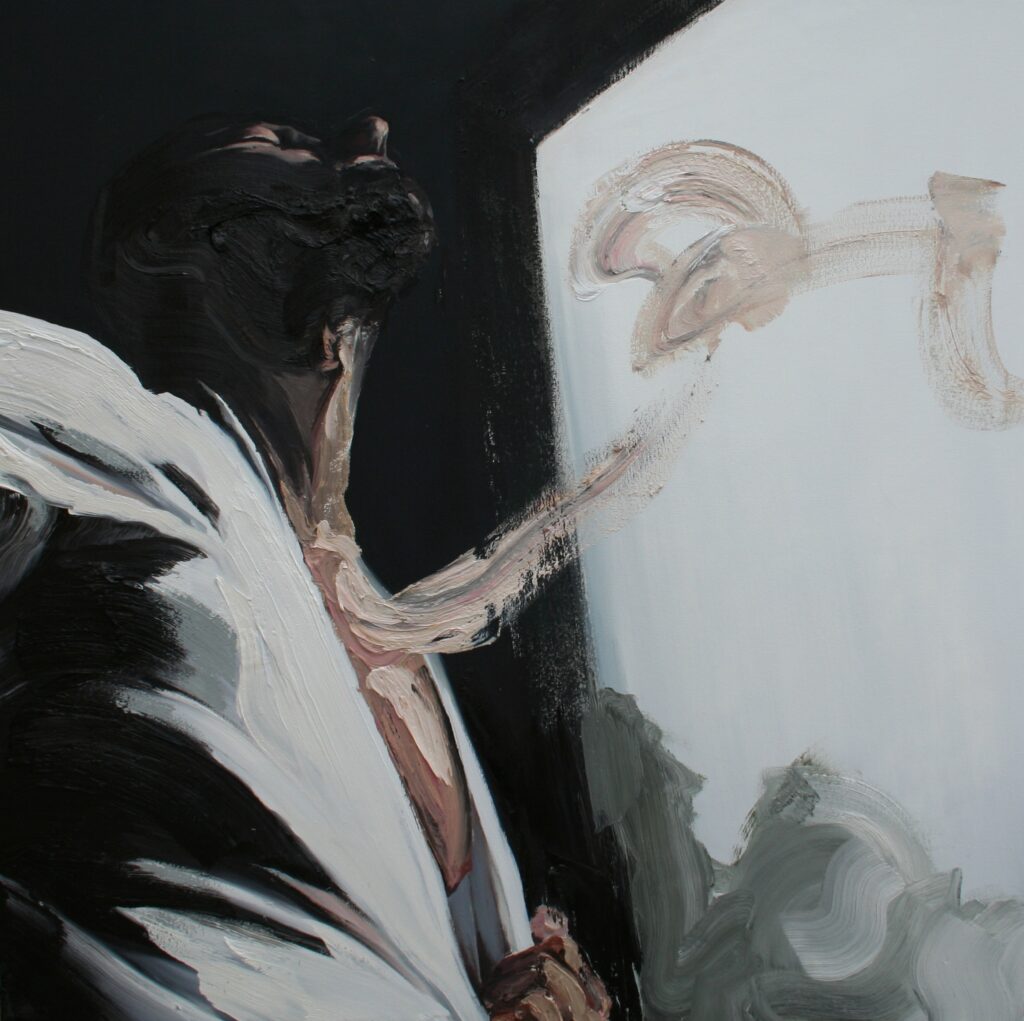
Marcin Paprota Marton_The Identity of Places Salvation Game TUAM_130x100cm_
oil on transparent linen canvas_Dungarvan_Ireland_2025
Landscapes stand as silent witnesses to human history.
“On July 14, 2025, Ireland began the exhumation of 796 children’s bodies from a religious house in Tuam. This place was one of eighteen similar facilities across Ireland where women who became pregnant outside of marriage were sent, often against their will, to give birth away from public scrutiny.
For decades, the tragic fate of hundreds of children who died there remained hidden beneath an unremarkable patch of grass.
The discovery is particularly disturbing because no burial documents, headstones, or any memorials have survived for the estimated 800 children buried there. These children, who died from various causes including malnutrition, neglect, and disease, were laid to rest without minimal ceremony or acknowledgment.
The investigation revealed several troubling aspects of how these institutions operated:
– children were routinely separated from their mothers;
– many infants were given up for adoption, often to families abroad;
– death rates were significantly higher than in the general population;
– record-keeping was intentionally obscured or neglected;
– survivors and families were denied information for decades.
DNA analysis will be conducted where possible to identify remains, potentially allowing families to provide proper burials for relatives they never had the chance to know.
By literally unearthing this painful history, Ireland continues its journey toward reconciliation with its past.” (Text by Clara Byrne: https://newsday.ie/ireland-begins-exhumation-796…/)
The painting exemplifies the decline of a church that until recently was outside the law, not only in Ireland but worldwide.

